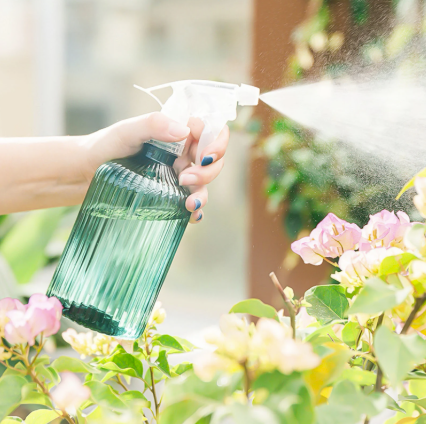Welcome New Cat Parents!
Reduce Your Cat's Stress: A Guide to Caring for and Training Your Feline Friend
Welcome to our self-guided online lesson designed specifically for new cat parents like you! Bringing a new furry friend into your home is an exciting and rewarding experience, but it also comes with its own set of challenges. One of the most important aspects of cat care is understanding how to reduce your cat's stress and provide a safe and comfortable environment for them to thrive in.
In this lesson, we will cover essential tips and techniques on how to care for and train your cat, with a specific focus on reducing their stress levels. By following our expert advice and implementing our proven strategies, you will be able to create a harmonious and happy relationship with your feline companion.
Whether you're a first-time cat owner or looking to improve your existing cat care skills, this lesson is packed with valuable information to help you navigate the world of cat parenting with confidence. So, let's dive in and learn how to give your cat the love and care they deserve!
Identifying and removing potential hazards in your cat's environment is crucial in reducing their stress levels. Cats are curious creatures and can easily get into unsafe situations if the proper precautions are not taken. Here are some common hazards to watch out for:
Household Plants: Many common houseplants are toxic to cats if ingested. Make sure to research and remove any plants that could be harmful to your feline friend.
Small Objects: Cats are known to play with small objects that can be a choking hazard. Keep items like rubber bands, paper clips, and small toys out of reach.
Electrical Cords: Cats may chew on electrical cords, posing a risk of electric shock. Use cord protectors or hide cords behind furniture to prevent access.
Open Windows: Cats can easily fall from open windows, especially in multi-story homes. Install secure screens or keep windows closed to prevent accidents.
Household Chemicals: Cleaning products, pesticides, and certain foods can be toxic to cats. Store these items in secure cabinets away from your pet.
By being mindful of these potential hazards and taking proactive steps to eliminate them from your cat's environment, you can create a safer and less stressful space for your furry companion.
Creating designated safe spaces for your cat is essential in helping reduce their stress levels. Cats are territorial animals and having a safe space they can retreat to when feeling overwhelmed or anxious can make a big difference in their overall well-being.
When setting up a safe space for your cat, choose a quiet and peaceful area in your home where they can have some privacy. This space should be away from loud noises, high traffic areas, or any other pets that may cause them stress.
Provide your cat with a cozy bed or blanket, some toys, and a scratching post in their safe space. Cats often feel more secure when they have items that they can interact with and use to mark their territory.
Make sure to keep this area clean and comfortable at all times. Cats are clean animals and having a clean and well-maintained safe space will help them feel more at ease.
Encourage your cat to use their safe space by placing treats or their favorite toys in the area. This will help them associate this space with positive experiences and make them more likely to seek refuge there when they feel stressed.
Remember, every cat is different, so observe your cat's behavior and adjust their safe space as needed to ensure it meets their specific needs and preferences.

Another effective way to reduce your cat's stress levels is to provide interactive toys and scratching posts for stimulation. Cats are natural hunters and need mental and physical stimulation to stay happy and healthy. Interactive toys such as feather wands, laser pointers, or puzzle feeders can engage your cat's hunting instincts and provide a fun way for them to burn off excess energy.
Scratching posts are also vital for your cat's well-being. Cats scratch to mark their territory, stretch their muscles, and keep their claws healthy. By providing a variety of scratching posts made from different materials like sisal, cardboard, or carpet, you can help prevent your cat from scratching furniture or other household items.
Place interactive toys and scratching posts in different areas of your home to encourage your cat to explore and play. Rotate toys regularly to keep things fresh and exciting for your feline friend. By providing these outlets for stimulation, you can help reduce your cat's stress and promote a happy and healthy environment for them to thrive in.
One crucial aspect of reducing your cat's stress is to ensure that the litter box placement is both accessible and private. Cats are very particular about their bathroom habits, and if they feel exposed or vulnerable while using the litter box, it can lead to stress and anxiety.
When deciding on the placement of your cat's litter box, choose a quiet and low-traffic area of your home. Cats prefer privacy when using the litter box, so avoid placing it in a busy or noisy location. Additionally, ensure that the litter box is easily accessible for your cat at all times.
It's important to have multiple litter boxes if you have more than one cat in your household. Each cat should have its own designated litter box to prevent territorial issues and reduce stress. Place the litter boxes in different areas of your home to give each cat options for using the bathroom in a quiet and private space.
By providing your cat with a private and accessible litter box, you can help reduce their stress levels and create a comfortable environment for them to do their business.

One effective way to reduce your cat's stress is to maintain a consistent routine for feeding and playtime. Cats thrive on routine and predictability, so establishing set mealtimes and play sessions can help create a sense of security for your feline friend.
When it comes to feeding, try to feed your cat at the same times each day. Consistency in feeding schedules can help regulate your cat's digestive system and reduce anxiety related to unpredictable meal times. Make sure to provide fresh water at all times and monitor your cat's food intake to ensure they are getting the right amount of nutrition.
Playtime is also crucial for reducing stress in cats. Regular play sessions can help your cat release pent-up energy, reduce boredom, and provide mental stimulation. Set aside dedicated time each day to engage your cat in interactive play with toys such as feather wands, laser pointers, or catnip-filled toys. Rotate toys regularly to keep things interesting for your cat.
By sticking to a consistent routine for feeding and playtime, you can help your cat feel more secure and reduce their overall stress levels. Remember, every cat is unique, so pay attention to your cat's individual preferences and adjust the routine as needed to ensure their well-being.
Lesson Conclusion:
The Importance of Reducing Your Cat's Stress
As new cat parents, it's crucial to remember the goal of reducing your cat's stress to create a calm environment at home. By implementing the tips and techniques covered in this lesson on how to care for and train your cat, you can help ensure that your feline companion feels safe, happy, and content in their new environment.
If you ever feel overwhelmed or need a refresher, don't hesitate to review this lesson or explore other valuable resources within the course. Remember, a stress-free cat is a happy cat, and by prioritizing their well-being, you're setting the stage for a fulfilling and harmonious relationship with your furry friend.

